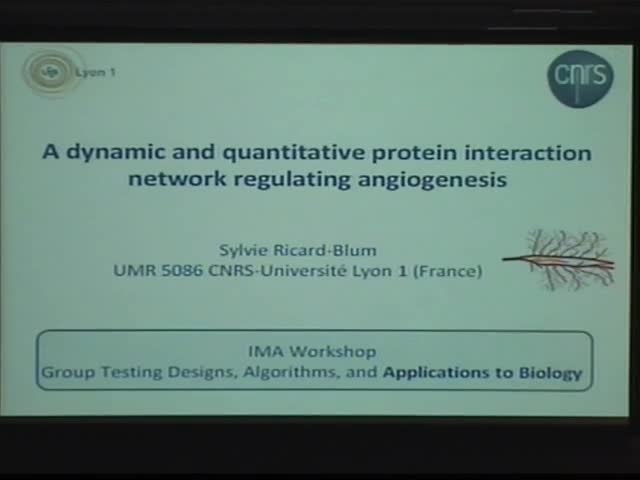A dynamic and quantitative protein interaction network regulating angiogenesis
Presenter
February 16, 2012
Keywords:
- Dynamical systems in biology
MSC:
- 37N25
Abstract
Angiogenesis, consisting in the formation of blood vessels from preexisting ones, is of crucial importance in pathological situations such as cancer and diabetes and is a therapeutic target for these two diseases. We have developed protein and sugar arrays probed by surface plasmon resonance (SPR) imaging to identify binding partners of proteins, polysaccharides and receptors regulating angiogenesis. Interactions collected from our own experiments and from literature curation have been used to build a network comprising protein-protein and protein-polysaccharide interactions. To switch from a static to a dynamic and quantitative interaction network, we have measured kinetics and affinity of interactions by SPR to discriminate transient from stable interactions and to prioritize interactions in the network. We have also identified protein interaction sites either experimentally or by molecular modeling to discriminate interactions occurring simultaneously from those taking place sequentially. The ultimate step is to integrate, using bioinformatics tools, all these parameters in the interaction network together with inhibitors of these interactions and with gene and protein expression data available from Array Express or Gene Expression Omnibus and from the Human Protein Atlas. This dynamic network will allow us to understand how angiogenesis is regulated in a concerted fashion via several receptors and signaling pathways, to identify crucial interactions for the integrity of the network that are potential therapeutic targets, and to predict the side effects of anti-angiogenic treatments.
